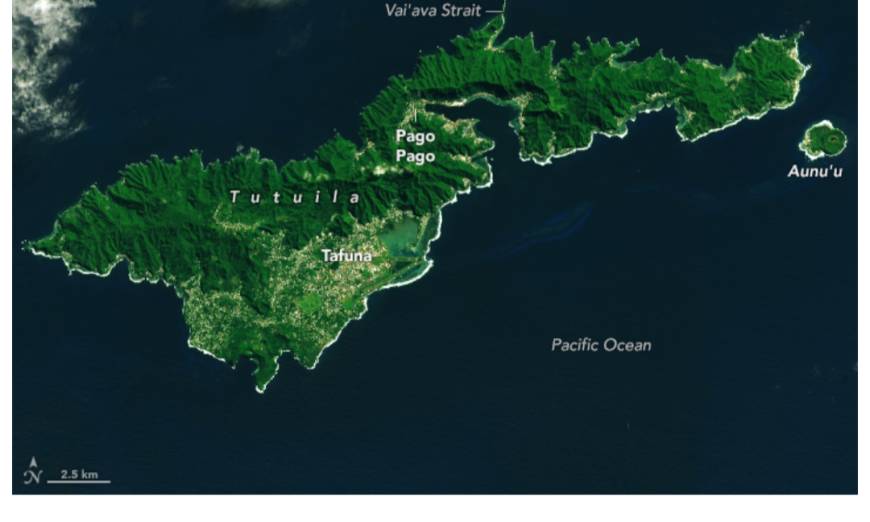July 22, 2022.
On the islands of American Samoa, rugged volcanic terrain is blanketed with dense tropical rainforest and ringed by dramatic coastlines and coral reefs.
The U.S. territory in the South Pacific is made up of five volcanic islands and two coral atolls located 3,500 kilometers (2,200 miles) southwest of Hawaii and 2,600 kilometers (1,600 miles) northeast of New Zealand.
This rare cloud-free image of Tutuila, the largest island in the American Samoan chain, was acquired by the Operational Land Imager (OLI) on the Landsat 8 satellite on July 22, 2022. Tutuila Island is the apex of a shield volcano, the majority of which is underwater.
The islands of American Samoa were created by hotspot volcanism, similar to the Hawaiian Islands. The Pacific Plate passes over a plume of molten rock rising from the mantle, resulting in a chain of islands and seamounts.
The territory is home to the National Park of American Samoa, the only U.S. national park in the Southern Hemisphere.
Owing in large part to its remote location, the park was the least-visited U.S. national park in 2022 with 1,887 total visitors, according to the National Park Service. It is distributed across three islands and includes marine areas containing biodiverse coral reefs. Tropical flora and fauna, Samoan culture, archaeological sites, and volcanic landscapes await visitors who make the journey there.
Tutuila, as well as the Ofu-Olosega and Taʻū islands to the east, are still considered potentially active. The last eruption on Tutuila dates back 1,700 to 1,400 years, while the most recent volcanic activity along the American Samoan chain has primarily occurred underwater. The hotspot is currently believed to be beneath a seamount east of Taʻū Island.

Remnants of past volcanism appear on and around Tutuila. Jutting out from its north shore is Vaiʻava Strait National Natural Landmark.
There, wave action has carved away at rocks from the last major volcanic event that formed Tutuila Island, leaving a knife-edge ridge protruding from the ocean (visible in the photograph above). On the tiny island of Aunuʻu, another national natural landmark, relatively young basalt flows are exposed, and the crater rim of a volcanic cone encloses a freshwater marsh. The harbor near Pago Pago sits inside of a collapsed caldera and contains a coral reef community that scientists have surveyed periodically for over 100 years.
As the volcanoes of American Samoa cool off from their fiery past, they are becoming denser and slowly sinking. The land subsides even more due to its proximity to the Tonga Trench, which generates large earthquakes. When combined with relative sea level rise, land subsidence can increase the potential frequency and severity of coastal flooding.
A team of NASA scientists recently published a study on how to better map ground changes on earthquake-prone islands such as Tutuila. They discovered that supplementing tide gauge and altimetry measurements with data from interferometric synthetic aperture radar (InSAR), which can pierce through clouds and vegetation, could result in a more nuanced and comprehensive map.
The study found that Tutuila sank an average of 6 to 9 millimeters per year between late 2015 and mid-2022, compared to 1 to 2 millimeters per year before 2009. That year, an 8.1-magnitude earthquake struck the islands of American Samoa, Samoa, and Tonga. The highest rates of sinking occurred right after the earthquake, especially along the coastlines.
NASA Earth Observatory image by Lauren Dauphin, using Landsat data from the U.S. Geological Survey. Photo courtesy of the National Park Service. Story by Lindsey Doermann.
Source, NASA.

